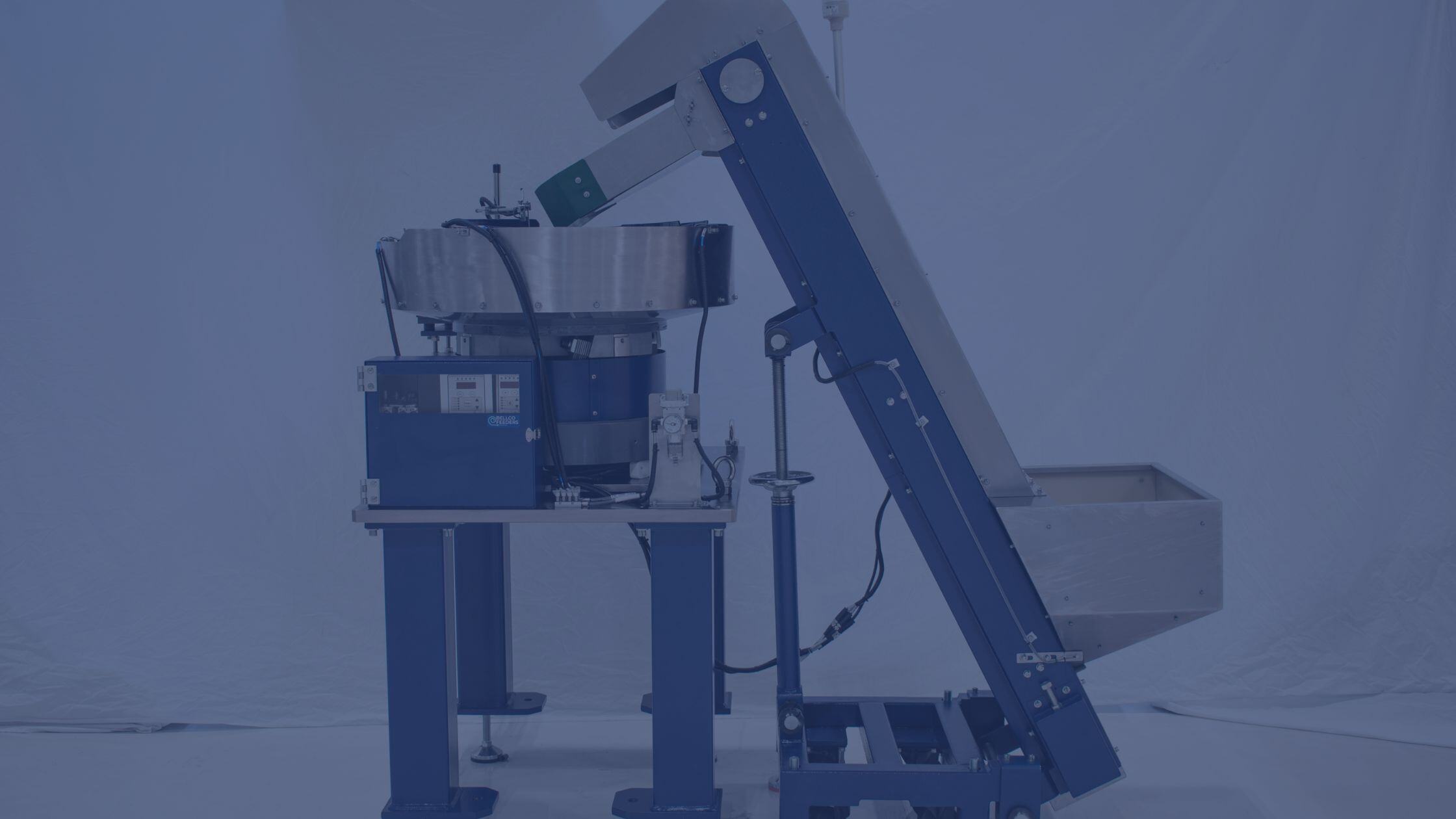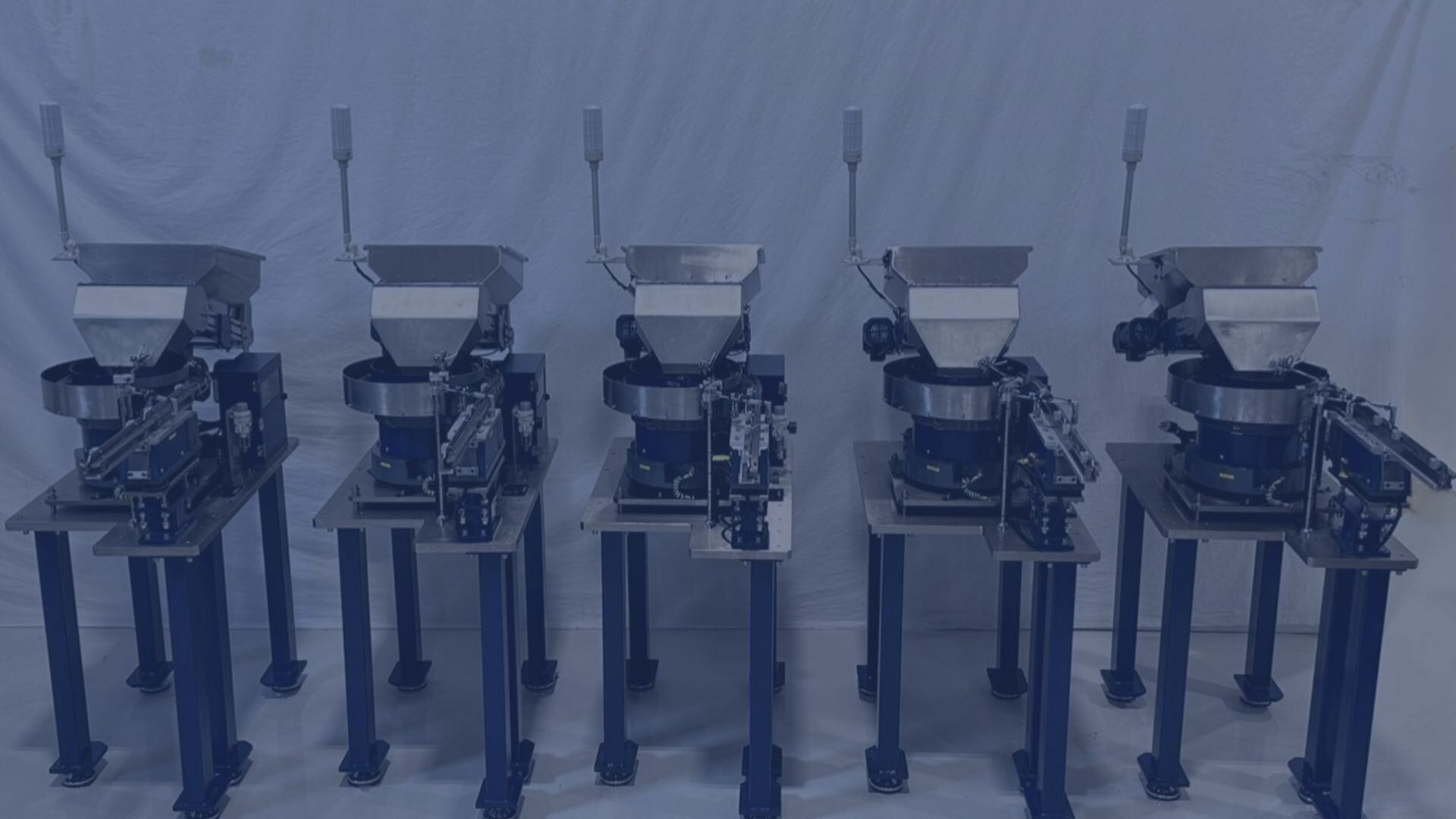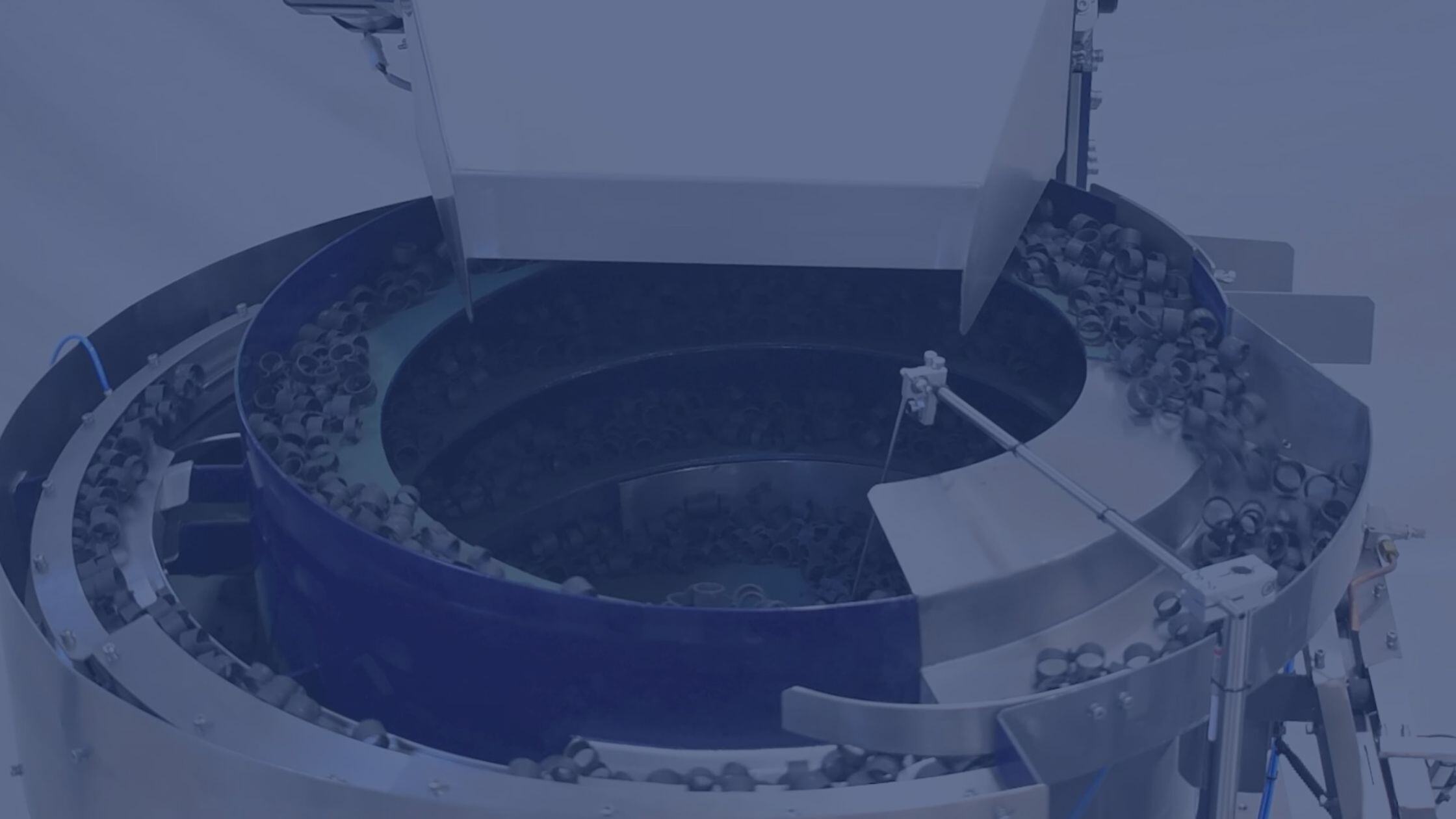Case Study: Custom Vibratory Bowl Feeder for Multiple Knob Parts
Custom vibratory feeder system for multiple part numbers.
| Industry | Automotive |
| Rate | 10 PPM |
| Escapement | Side-shuttle with pull-back design |
Project Overview
Bellco Feeders developed a custom vibratory bowl feeder system for an automotive assembly application. The system was designed to orient and deliver a family of knob parts (multiple part numbers) for precise robotic pick-up at a consistent rate of 10 PPM. With a side-shuttle pull-back escapement, a Keyence sensor, PNP digital controllers, and a welded steel frame, this part feeding system provides dependable part presentation in a compact, automation-ready package.
The Challenge: Feeding Multiple Knob Parts in an Automotive Assembly Line
The customer needed a feeder system that could:
- Handle multiple part numbers within the same knob family
- Orient parts consistently for robotic pick-up
- Isolate one part at a time to prevent mis-picks
- Integrate easily into an existing robotic automation cell using EtherNet/IP
The Bellco Solution: Custom Vibratory Feeding System for Multi-Part Flexibility
Our engineering team developed a vibratory feeding system optimized for multi-part orientation and robotic integration. This system includes:
- Custom 600–700mm Stainless Steel Vibratory Feeder Bowl: Accommodates multiple knob part numbers with a simple tooling swap, offering flexibility and cost savings.
- Side-Shuttle Pull-Back Escapement: Isolates one part at a time and presents it cleanly for robotic picking, minimizing vibration and protecting fragile components.
- End-of-Track Sensor: Provides real-time part presence feedback to coordinate robot timing. This sensor is a critical yet often overlooked component in automated feeding.
- Fully Wired Controls and Integration: Includes an SMC air manifold, PNP digital controllers, and a lockable control box wired with EtherNet/IP for plug-and-play automation.
- SolidWorks Modeling: CAD files were provided to the customer before production, allowing for footprint confirmation, feedback, and design approvals.
Take a peek 👀 :

Custom-tooled vibratory bowl feeder for multiple part numbers.

Custom-made to handle several part numbers in the same knob family.


Side-shuttle escapement with pull-back design, ideal for delicate/lightweight parts.

End-of-track sensor controls part flow and ensures accurate spacing for robotic pick-up.
The Result: Robotic Efficiency and Multi-Part Flexibility
The customer received a complete, automation-ready system that delivered reliable knob orientation and spacing. The system achieved a consistent 10 parts-per-minute feed rate. With the ability to handle multiple part numbers and robust integration features, this feeder system helped streamline the pick-and-place process and minimize manual adjustments.
Our approach ensured that:
✅ Each part was oriented consistently for robotic pick-up
✅ The system handled multiple part sizes with ease
✅ Integration into the automation cell was fast and smooth
This project highlights Bellco’s expertise in robotic-ready vibratory feeder systems. From orientation control to escapement design, every component was built around production reliability and flexibility.
Have a challenging part to feed?
We’ll design a system that works: tested with your actual parts, built to your spec, and ready to plug into your line.
👉 Request a Quote and let's get started!
Frequently Asked Questions
Have a more specific question? Contact us and we'll do our best to answer it!
Bellco uses custom tooling and interchangeable tracks that allow a single vibratory bowl feeder to handle several part numbers in the same family. This design reduces changeover time and maximizes efficiency without requiring multiple feeders.
Typical lead time is 12–14 weeks from order to shipment.
The end-of-track sensor provides real-time feedback on part presence, helping synchronize the feeder with the robot’s timing. This coordination prevents mis-picks and ensures a steady, reliable flow of parts into the automation cell.
The system is fully wired with EtherNet/IP connectivity, digital controllers, and a lockable control box, allowing it to plug directly into most existing automation cells with minimal setup time.



